
Is Your GPA Too Low for Med School? How to Still Get an Acceptance
If you have a low GPA and want to be a doctor, all hope is not lost. Here’s how you can get accepted to medical school with a low GPA.

Two doctors, both with the same MD after their name, yet a four-year difference in training results in a salary gap of over half a million dollars annually.
In this post, we’re ranking 34 medical specialties by compensation, counting down from the lowest-paid to the highest-paid doctors in the US.
Let’s dive in.
Medical genetics starts us off at $260,000. These physicians require just 3 years of residency—the shortest training period in medicine. They diagnose and manage genetic disorders, working closely with families to understand inherited conditions.
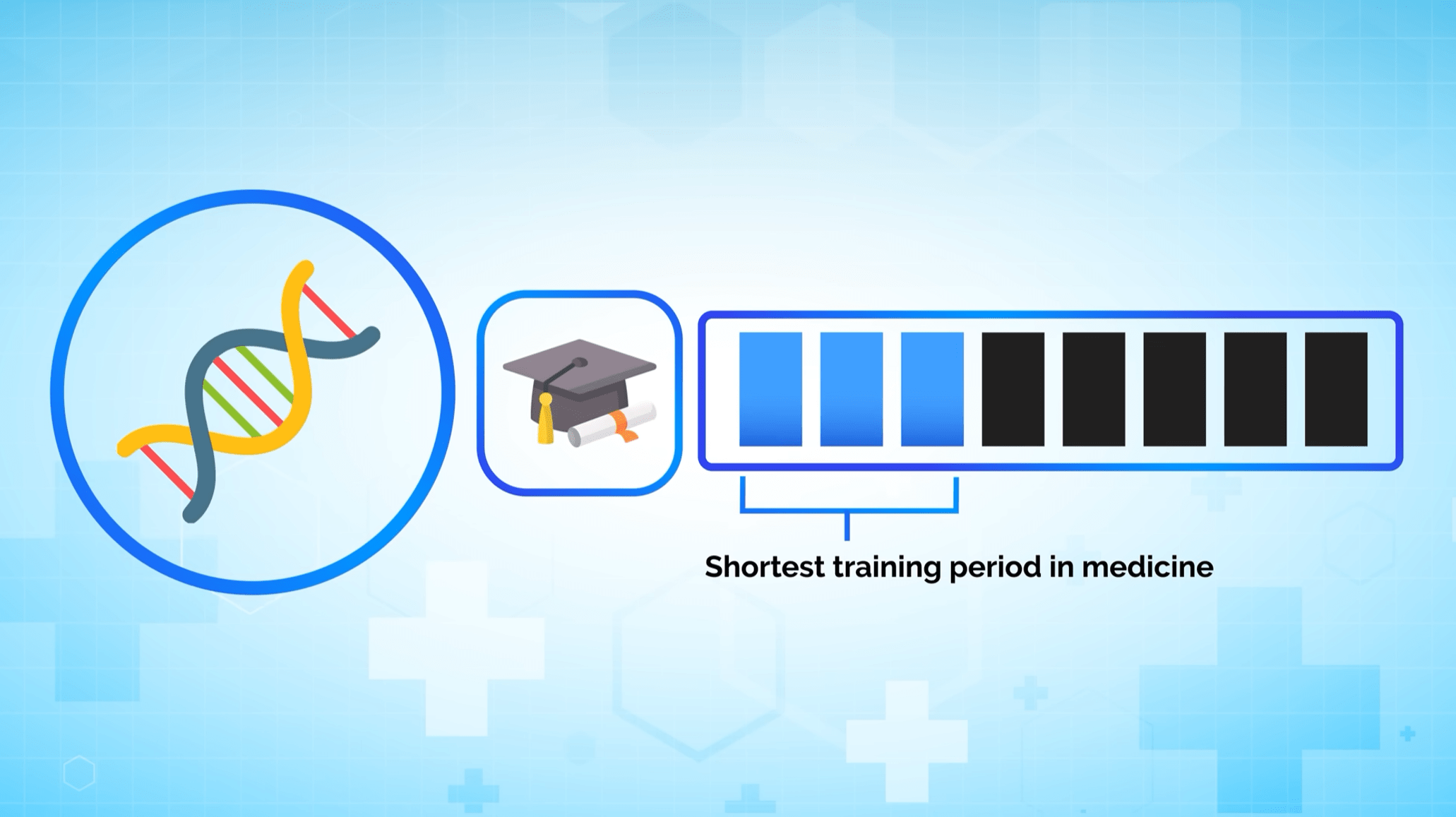
Endocrinologists earn $291,000 treating diabetes and hormonal disorders after completing a 3-year internal medicine residency and a 2- to 3-year endocrinology fellowship.
Geriatricians earn $292,000 and specialize in treating the elderly after 3 years of either an internal medicine or family medicine residency, followed by a 1-year geriatric medicine fellowship.
Despite our rapidly aging population, this specialty faces challenges with low reimbursement rates and complex patient care needs that require more time per visit.
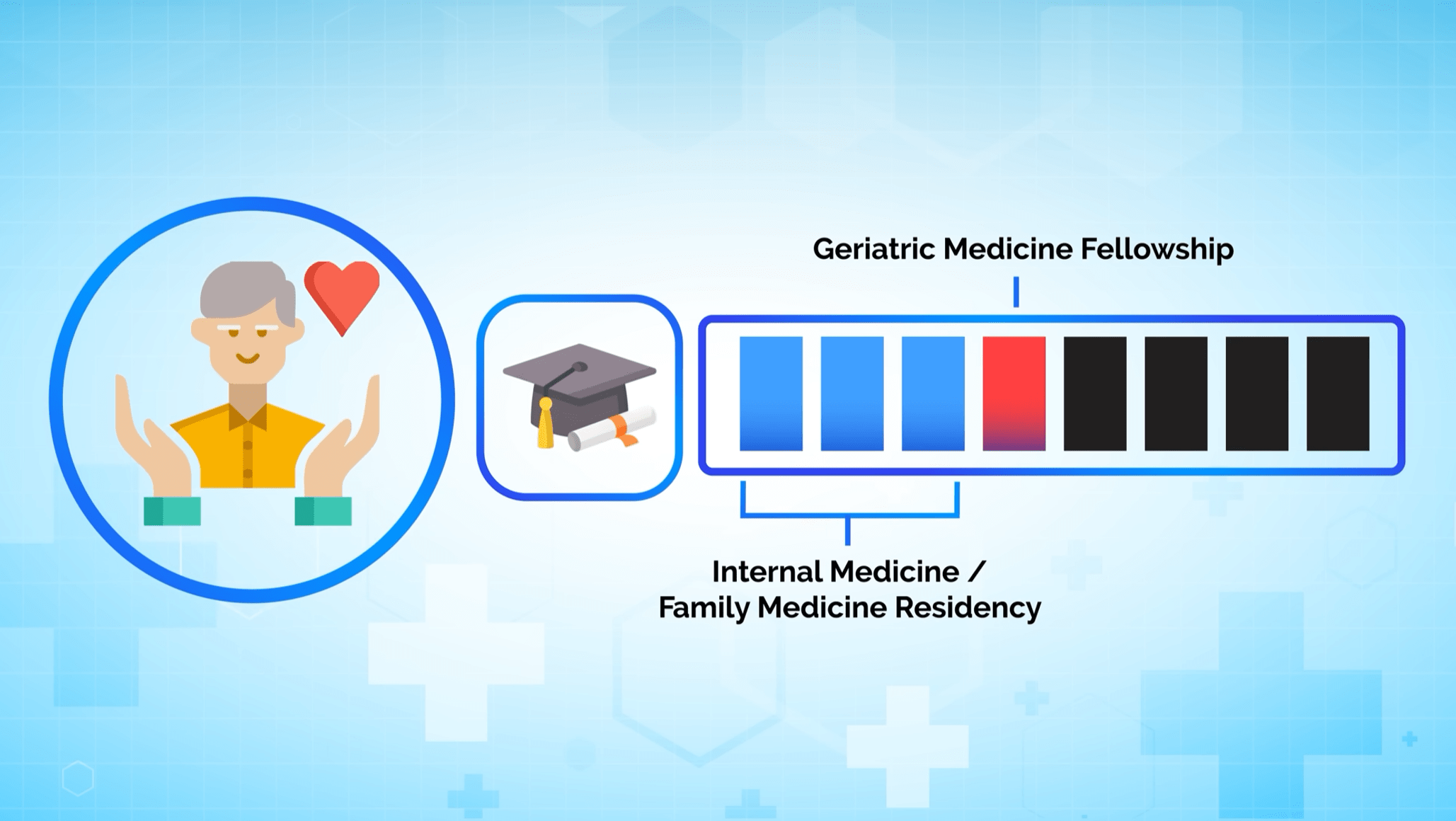
Med-Peds physicians earn $297,000 after 4 years of combined residency training. Treating both kids and adults in settings that range from pediatric clinics to adult hospitals may be versatile, but the pay reflects the broad, less specialized nature of the approach.
We excluded pediatric subspecialties from this ranking because they consistently earn significantly less than their adult counterparts.
For example, regular gastroenterologists earn 80% more than pediatric gastroenterologists. Pediatric specialists may also require more training than doctors who treat adults, as is the case in child neurology, child psychiatry, and pediatric emergency medicine; yet, they earn significantly less due to lower insurance reimbursements for children.
Allergy and immunology specialists average $309,000 after 3 years of internal medicine or pediatrics residency and 2 to 3 years of fellowship training.
These doctors treat everything from seasonal allergies to complex immunodeficiencies, often maintaining both adult and pediatric practices.

Preventive medicine physicians make $310,000 after 3 years of residency. They focus on population health rather than individual patients, often working in public health departments or corporate wellness programs.
Family medicine hits $319,000 and requires 3 years of residency. Despite being the backbone of healthcare and treating patients of all ages, compensation remains relatively low, and the physician shortage in primary care continues to worsen.
Noticing a pattern? The 3-year residencies cluster at the bottom, while longer training programs dominate the top, exemplifying the clear correlation between training length and earning potential.
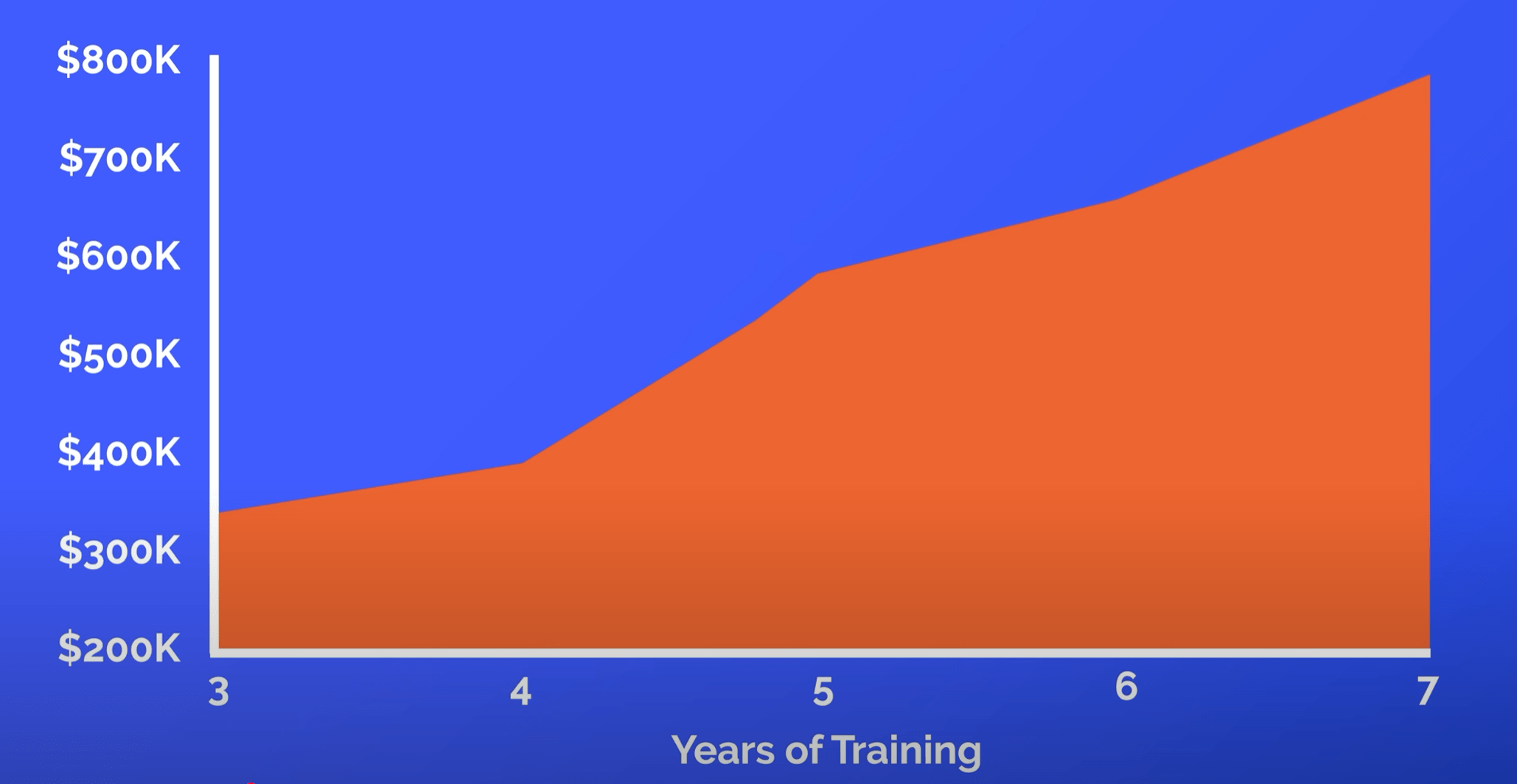
Infectious disease specialists make $321,000. These physicians require 3 years of IM residency followed by 2 years of fellowship.
Even after gaining recognition during the pandemic for their expertise in complex infections and antimicrobial resistance, compensation remains relatively modest by physician standards.
Rheumatologists earn $325,000 and treat autoimmune and inflammatory conditions like lupus and rheumatoid arthritis. It requires a 3-year internal medicine residency followed by a 2-year rheumatology fellowship.
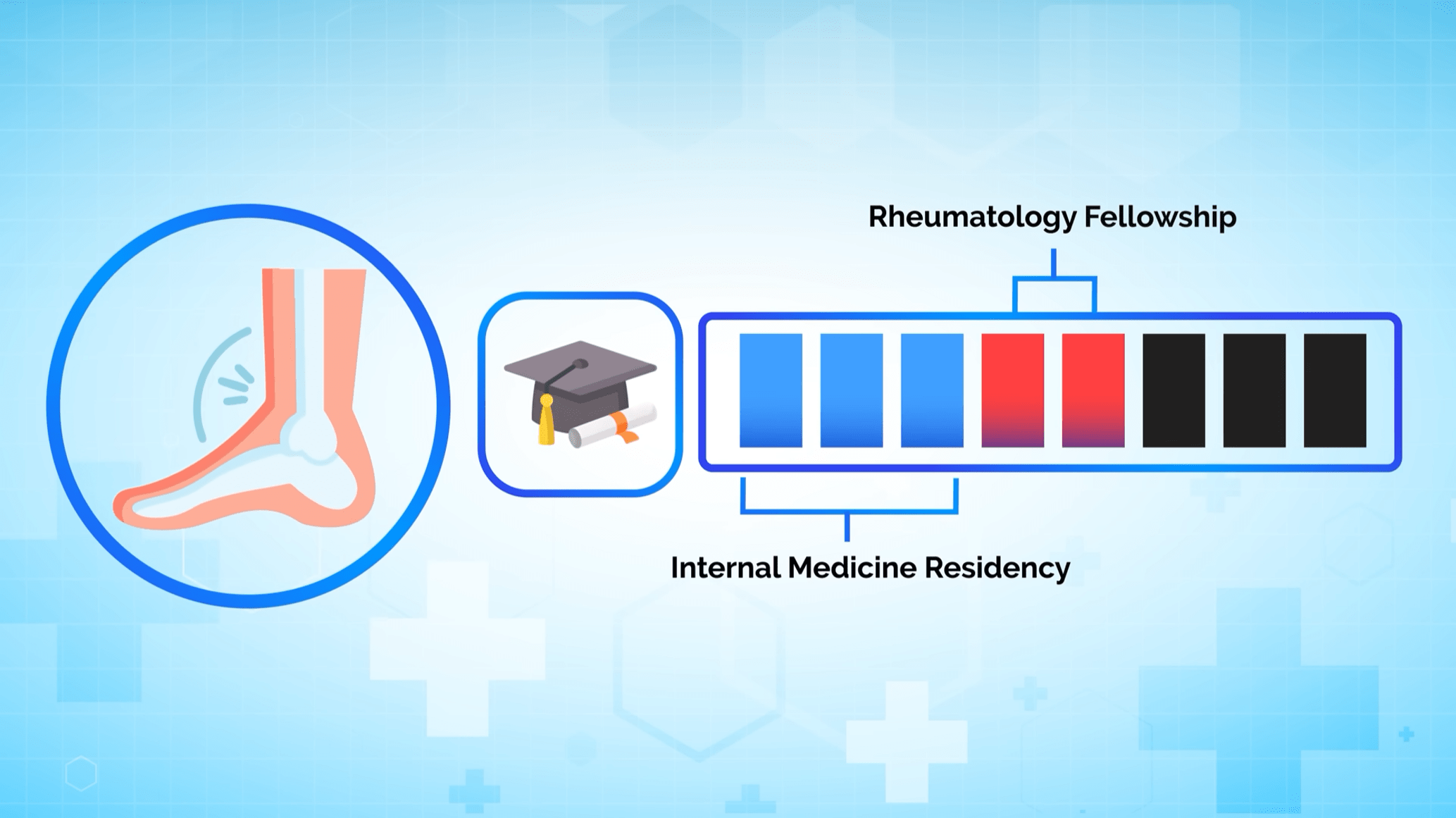
Internal medicine averages $326,000 after 3 years of residency. But note that this is for those who stay in general practice—many IM physicians subspecialize, although the salary boost isn’t guaranteed.
For example, endocrinology pays about $36,000 less than regular IM despite additional fellowship training. More training doesn’t automatically mean higher compensation, which is especially true of pediatric subspecialties, many of which make less than general pediatricians.
Psychiatrists earn $342,000 after 4 years of residency. Despite the growing mental health crisis and increasing demand for psychiatric services, compensation remains in the middle tier. Many supplement their income through private practice and cash-pay models.

And here’s where the compensation gaps really begin to grow.
Neurologists make $361,000 after 4 years of residency, treating disorders of the brain and nervous system.
Nephrologists average $367,000 and focus on the kidneys. With increasing chronic kidney disease and diabetes prevalence, these specialists are in high demand, particularly for dialysis and transplant care.
Pathologists earn $370,000 after 4 years of residency. They work behind the scenes, examining tissues and lab specimens. While they have minimal patient interaction, their work is crucial for accurate diagnosis and treatment planning.
PM&R physicians earn $375,000 after completing four years of residency, focusing on restoring the function and quality of life for their patients. This specialty has recently experienced a surge in competitiveness, from being the second-least competitive of 22 specialties in 2020, only ranking above family medicine, to ranking 14th most competitive in 2024.
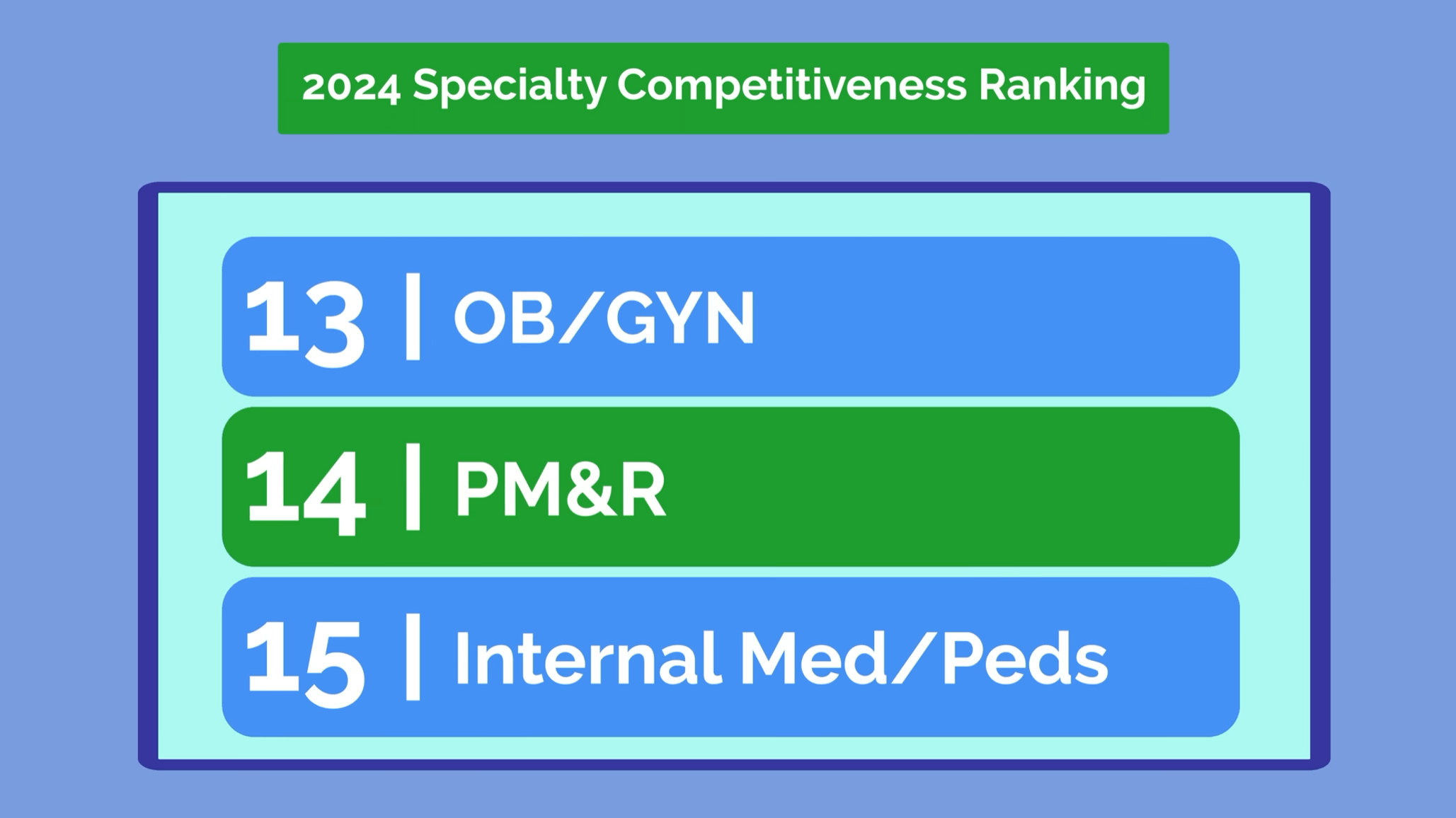
OB/GYNs make $390,000 after 4 years of residency. They provide comprehensive women’s healthcare from routine care to delivering babies and performing surgery. High malpractice liability risks are factored into compensation packages.
Emergency medicine hits $411,000 after 3 to 4 years of residency. The demanding shift work, which includes nights, weekends, and holidays, combined with the immediate life-saving nature of the job, drives this higher compensation.
Pulmonologists earn $426,000. After 3 years of internal medicine residency, these specialists complete a 3-year combined pulmonology and critical care fellowship.
Pulmonologists specialize in treating respiratory diseases and often work in critical care settings. With conditions like COPD and lung cancer requiring specialized care, they command higher compensation than many other internal medicine subspecialties.
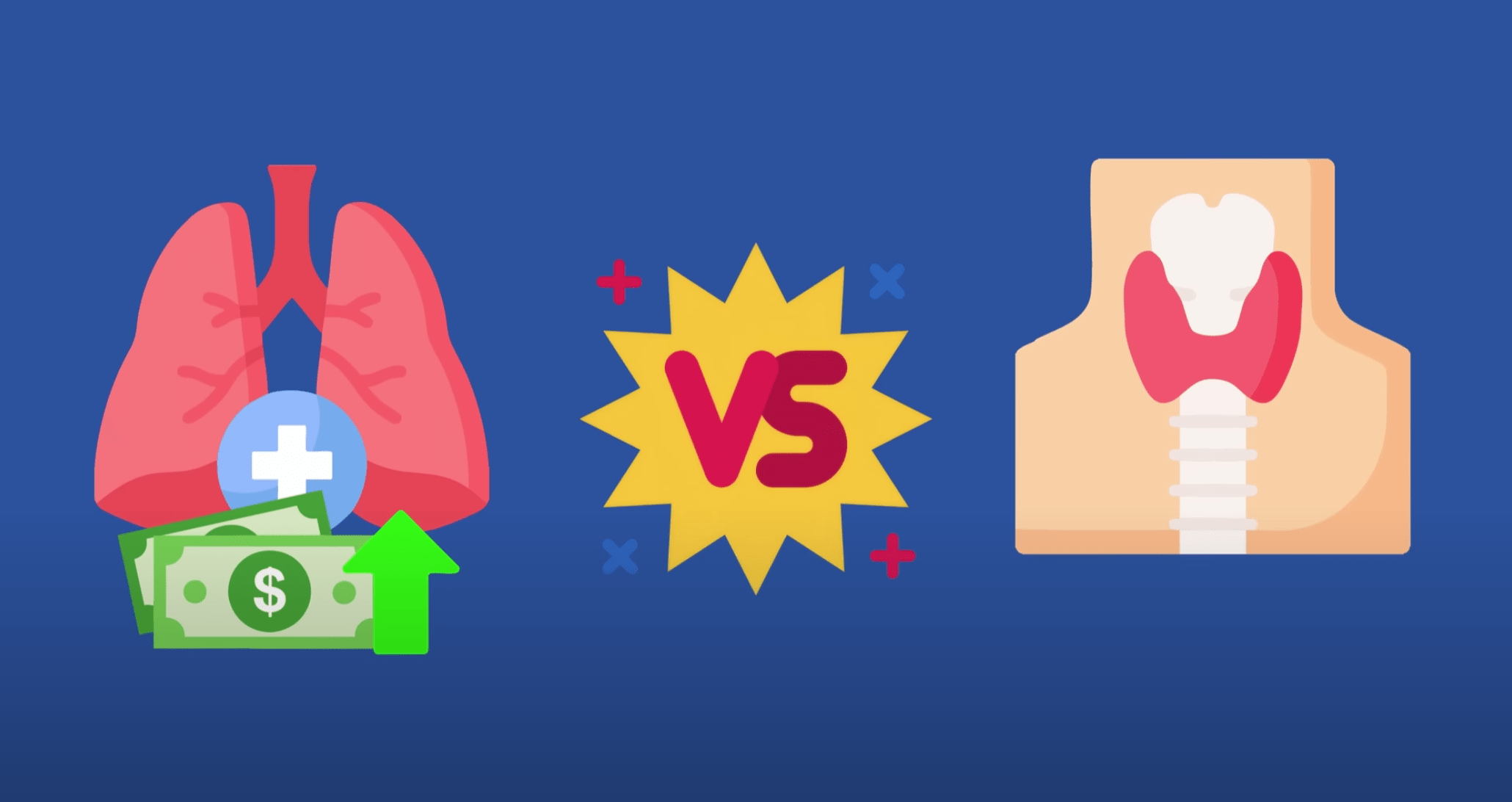
Ophthalmologists make $477,000 after 4 years of residency, treating diseases of the eye and performing surgeries like cataract removal. This specialty is known for its excellent work-life balance combined with strong compensation.
General surgeons earn $483,000 after 5 years of residency. Like internal medicine does for non-surgical subspecialties, general surgery serves as the foundation for many surgical subspecialties.
The significant pay jump is due to the fact that surgical specialties are, of course, more procedural than non-surgical specialties, and procedures pay more.

Medical oncologists earn $502,000 after 3 years of internal medicine residency and a 3-year hematology/oncology fellowship. They treat cancer patients with chemotherapy and immunotherapy.
Dermatologists average $508,000 after 4 years of residency, which represents the best of both worlds: high pay and exceptional work-life balance.
Most work regular business hours and deal with minimal emergency call. This lifestyle appeal makes it fiercely competitive, with a 70% match rate and an average Step 2 score of 257, which is currently tied with orthopedic surgery for the highest among all specialties.

Wondering how your stats stack up for competitive specialties?
By comparing your metrics against the official data of matched applicants, SpecialtyPredictor.com shows you exactly where you stand. It accurately predicts your odds of matching into any given medical specialty.
The advanced algorithm will even identify your relative weaknesses compared to the average person in that specialty, providing personal insights that will help you prepare before it’s too late. See how your stats stack up for the specialties you’re most interested in.
And it’s not just for med students approaching residency applications—the algorithm converts premed stats to help you understand if you’re on the right track. Check it out completely free to see how competitive you really are.
Anesthesiologists earn $523,000 after 4 years of residency. They ensure patient safety during surgery and manage pain, working behind the scenes and playing a critical role in every surgical procedure.
We already made a video on highest paid doctor specialties, and you can check it out to learn more.
ENT surgeons average $523,000 after 5 years of residency, treating conditions of the ears, nose, throat, and related structures. ENT offers diverse practice opportunities from pediatric cases to complex head and neck cancer surgeries.
We’re now in the top 10, where compensation accelerates dramatically and training becomes increasingly intensive.
Gastroenterologists earn $538,000 after completing 3 years of internal medicine residency and 3 years of fellowship training. They treat digestive system disorders, and procedures like colonoscopies and endoscopies significantly boost earning potential.

Urologists make $559,000 after 5 years of residency, treating conditions of the urinary tract and male reproductive system. Unique among surgical subspecialties, urology offers greater flexibility between clinic and operating room practice.
Radiologists earn $572,000 after 5 years of residency. They interpret imaging studies like X-rays, CT scans, and MRIs. Many enjoy flexible schedules and remote work options, striking a happy medium between a solid work-life balance and great compensation.

Vascular surgeons average $576,000 after either 5 years of general surgery residency and 2 years of vascular surgery fellowship or a 5- to 7-year integrated vascular surgery residency.
Vascular surgeons treat diseases of blood vessels throughout the body, handling complex cases like aortic aneurysms and peripheral artery disease.
Cardiologists earn $587,000 after 3 years of internal medicine residency and a 3-year cardiology fellowship. It’s the most competitive and highest-paying of all internal medicine fellowships. Cardiologists treat diseases of the heart and vascular system, such as heart failure, hypertension, and heart attacks.

Radiation oncologists make $589,000 after 5 years of residency, treating cancer patients with targeted radiation therapy.
Now we’re in the top 4—the specialties that represent the pinnacle of physician compensation. Notice how training length continues to increase as we reach the top, reflecting the complexity and precision required in these fields.
Plastic surgeons average $621,000 after either a 6-year integrated plastic surgery residency or 5 years of general surgery followed by 3 years of independent plastic surgery residency.
These surgeons perform both reconstructive and aesthetic procedures, with many supplementing income through cash-pay cosmetic procedures.

Orthopedic surgeons earn $680,000 after 5 years of residency training. They treat musculoskeletal conditions from sports injuries to joint replacements.
Thoracic surgeons earn $690,000 after completing either an integrated 6-year residency or a 5-year general surgery residency, followed by a 2- to 3-year cardiothoracic fellowship.
These surgeons perform complex surgeries on the heart, lungs, and chest organs—procedures that are among the most technically demanding in medicine, often carrying life-or-death stakes.
Neurosurgeons top the list at $769,000 after 7 years of residency—the longest in medicine. They perform surgery on the brain, spine, and nervous system, often in emergencies where every second counts. They earn nearly 3 times what the lowest-paid specialty makes.
But neurosurgery isn’t just the highest-paid. It’s also the second most competitive specialty to match into. With only a 68.7% match rate, it has the lowest match rate of any specialty.

Successful applicants average 37.4 research items, which anyone who has successfully earned one research item knows is quite an achievement. And keep in mind that this is the average.
They also need exceptional Step 2 scores, averaging 255.
Remember, if you’re serious about matching into any competitive specialty, SpecialtyPredictor.com will show you exactly where you stand and what you need to improve.

If you have a low GPA and want to be a doctor, all hope is not lost. Here’s how you can get accepted to medical school with a low GPA.

Burnout rates range from 37% to 63%. See all 25 medical specialties ranked by the latest 2024 data to find the careers with the best work-life balance.